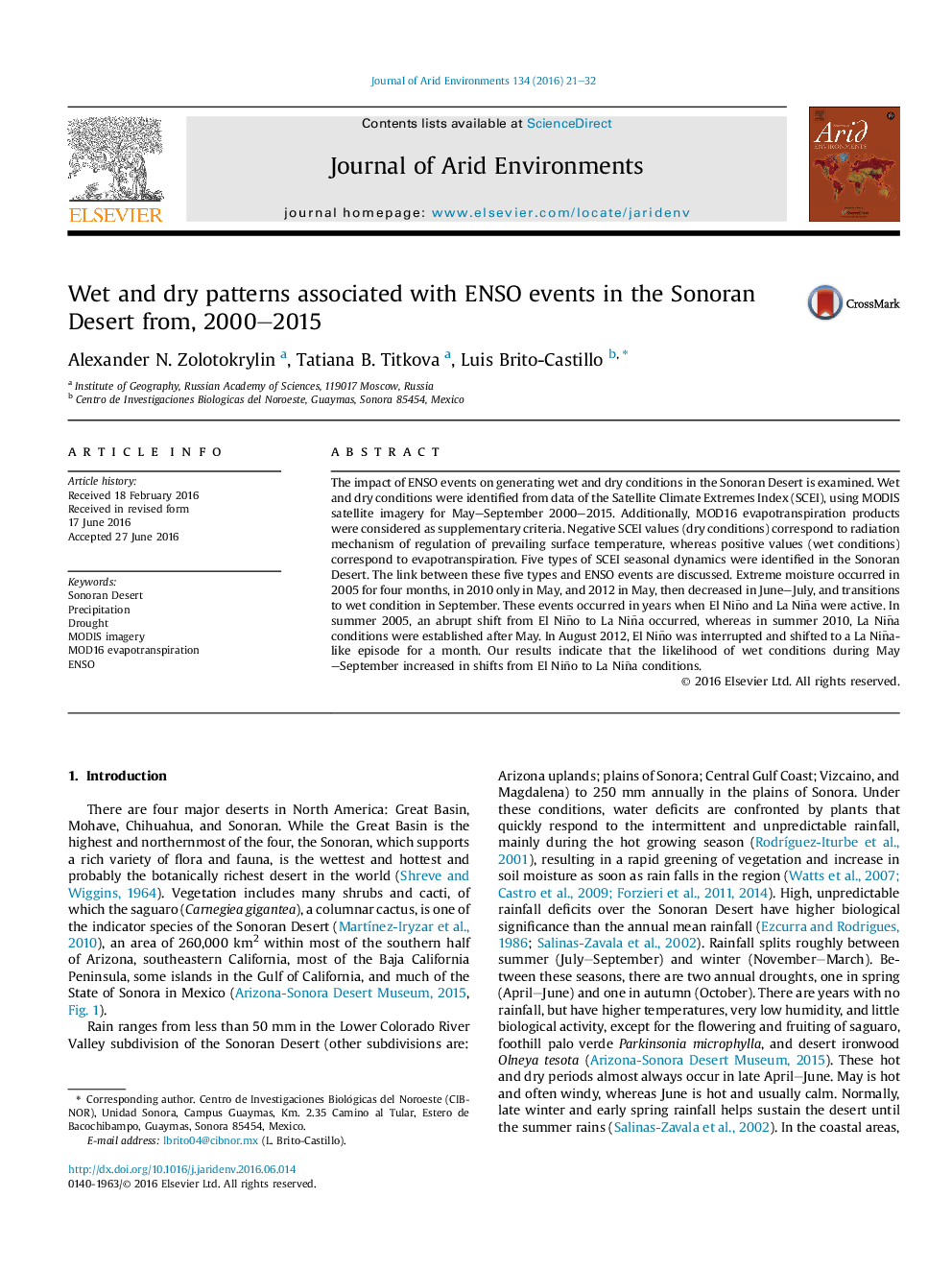| Article ID | Journal | Published Year | Pages | File Type |
|---|---|---|---|---|
| 6303143 | Journal of Arid Environments | 2016 | 12 Pages |
Abstract
The impact of ENSO events on generating wet and dry conditions in the Sonoran Desert is examined. Wet and dry conditions were identified from data of the Satellite Climate Extremes Index (SCEI), using MODIS satellite imagery for May-September 2000-2015. Additionally, MOD16 evapotranspiration products were considered as supplementary criteria. Negative SCEI values (dry conditions) correspond to radiation mechanism of regulation of prevailing surface temperature, whereas positive values (wet conditions) correspond to evapotranspiration. Five types of SCEI seasonal dynamics were identified in the Sonoran Desert. The link between these five types and ENSO events are discussed. Extreme moisture occurred in 2005 for four months, in 2010 only in May, and 2012 in May, then decreased in June-July, and transitions to wet condition in September. These events occurred in years when El Niño and La Niña were active. In summer 2005, an abrupt shift from El Niño to La Niña occurred, whereas in summer 2010, La Niña conditions were established after May. In August 2012, El Niño was interrupted and shifted to a La Niña-like episode for a month. Our results indicate that the likelihood of wet conditions during May-September increased in shifts from El Niño to La Niña conditions.
Related Topics
Physical Sciences and Engineering
Earth and Planetary Sciences
Earth-Surface Processes
Authors
Alexander N. Zolotokrylin, Tatiana B. Titkova, Luis Brito-Castillo,
